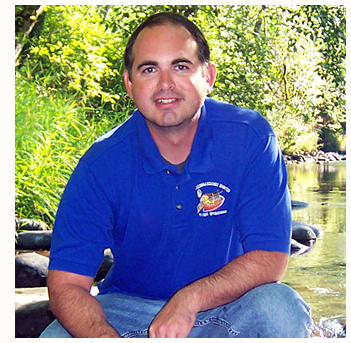 What’s your current position?
What’s your current position?
I am the HiRISE Downlink Lead, responsible for making sure our latest images download, process through our software correctly, and are made available to the public and
science community as quickly as possible. I lead a small team of undergraduate students that validates every image, looking for any processing problems or features like haze,
clouds, or dust that might have obscured the surface of Mars at the time the image was taken.
What got you interested in planetary science/working with HiRISE?
During spring 2005 I took a class about Mars taught by Alfred McEwen (principal investigator for HiRISE). I asked him later in the semester if I could interview him for a podcast I was hosting at the time.
The interview went well, and my last question was about undergraduate opportunities with his latest project, HiRISE. Within an hour I had a new job! I have now spent almost
a decade participating in one of the great missions exploring Mars.
Why is this work important to you?
I originally studied geology and planetary science, topics which were of course pertinent to my position at HiRISE. I am now, however, finishing up degrees in English and Creative Writing.
This change in academic pursuit was inspired in part by one of the best aspects of my job: education and public outreach. I have had several opportunity to speak to
students and other groups about our mission and Mars, and I have also been able to write about these topics. Providing facts is just a small part of what I have come to
appreciate about speaking and writing about HiRISE. I have been able to explore a variety of approaches to communicating just how important planetary science missions and
research are to society, and I plan to continue during this in the future in a variety of creative writing projects.
What would you suggest to a young person to study if he/she is interested in planetary science?
There are so many passions that fall under the umbrella of planetary science. For scientific research, a young person will want to study math, physics, and geology.
Spacecraft operations requires a diverse set of skills that can be obtained from any scientific or liberal arts degree. Of course we all use tools, including computers and
software, so programming ability and systems maintenance are highly valued. There are also education and public outreach opportunities in planetary science, positions that
might require good communication skills and design and artistic abilities.
About HiRISE
The HiRISE camera onboard the Mars Reconnaissance Orbiter is the most powerful one of its kind ever sent to another planet. Its high resolution allows
us to see Mars like never before, and helps other missions choose a safe spot to land for future exploration.
NASA’s Jet Propulsion Laboratory, a division of the California Institute of Technology in Pasadena, Calif., manages the Mars Reconnaissance
Orbiter for NASA’s Science Mission Directorate, Washington. Lockheed Martin Space Systems is the prime contractor for the project and
built the spacecraft. The HiRISE camera was built by Ball Aerospace & Technologies Corp. and is operated by the
University of Arizona.
 What’s your current position?
What’s your current position?